Introduction to Learning objects (LOs)
A Learning Object Repository (LOR) refers to storing content/assets/resources as well as their metadata record. These Learning Objects can be used to:
-
introduce a new concept or idea
-
give students practice with something they are learning
-
give students a new experience of a familiar idea
-
pose problems for students to solve
-
provide a backup resource
-
give students practice at something they are having difficulty with
-
provide students with a variety of experiences in a learning sequence
-
assess student knowledge / understanding
The Learning Object are usually in the form of a PDF or Word file that contains some information which can be used by different audiences for different purposes. It can be updated, reworded and used for different literacy levels. The use of such learning object is determined by the learning experience it is designed for.
|
One of the challenging aspects of teaching a programming course is how to provide the right information in the right context at the right time to the right person. Through this paper, we have tried to describe a new approach to a content creation and delivery mechanism for a programming course. This approach is based on the concept of creating a large repository of learning objects, each of which consists of the core material, code examples, supplementary notes, and review questions |
Categories of tools for the Learning Object lifecycle
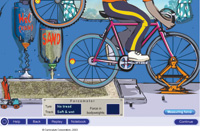 In India, teacher communities have shown remarkable interest in using these learning objects in teaching-learning activities. This has led to the creation of numerous tools to manage the different identifiable phases of LO lifecycle. According to the report on Free and Open Source Software (FOSS) for Open Educational Resources, the tools available to manage the elaboration of LOs can be divided into: authoring tools, tools to implement learning technology standards, learning object repositories, learning management systems and collaborative environments for sharing LOs. These tools are used respectively in the phases of production, description in conformity to standards, searching, fruition and sharing of LOs.
In India, teacher communities have shown remarkable interest in using these learning objects in teaching-learning activities. This has led to the creation of numerous tools to manage the different identifiable phases of LO lifecycle. According to the report on Free and Open Source Software (FOSS) for Open Educational Resources, the tools available to manage the elaboration of LOs can be divided into: authoring tools, tools to implement learning technology standards, learning object repositories, learning management systems and collaborative environments for sharing LOs. These tools are used respectively in the phases of production, description in conformity to standards, searching, fruition and sharing of LOs.
It is important to note that generally each category of tools covers only one aspect of the LO lifecycle. For example, authoring tools are closely related to the production phase. There are several types of media that can be produced (e.g. text, audio, video, animations, and so on), and typically each tool handles only a few types and produces digital objects in a proprietary format. It should be noted that most of the tools belonging to this category are not specifically designed to develop LOs. In the past, they could support the production of generic multimedia content, while now, they have been modified by adding some functionalities to transform multimedia contents to SCORM compliant contents. Tools for supporting the management of learning technology standards are developed with the aim of facilitating the enhancement of the descriptions of LOs.
So, they comply with the main standards adopted in the field of education. Generally, these tools are used only by experts having appropriate technical background to manage standards correctly.
Specifically, these tools are used for the operations of improving LO descriptions by means of metadata (for example using IEEE LOM) or supplying the necessary information for packaging and delivering LOs. Both operations are very important, because the former permits a better description of the resources and a more refined search, while the latter makes the resources usable by the numerous SCORM compliant learning environments and thus, guarantees the interoperability at LMS level.
LORs aim to facilitate the retrieval of LOs, overcoming the limitations of a generic search engine which often provides inaccurate results. LORs can generally be divided into two categories: repositories that store LOs and their metadata descriptions, and repositories that store only the archives of meta-data associated to LOs and the references for retrieving the LOs. Besides, repositories belonging to the first category are further divided into those that follow a centralised model in which LOs are stored in a single location, and those that follow a distributed model in which information is distributed
among different connected locations. As far as the search mechanisms are concerned, there are normally
two approaches used by LORs for finding stored Los. In the first, the organisation of the content in categories is linked to a taxonomy of the topics; in the second, free searching is allowed by means of the keywords present in the content (when the format allows this) or in the metadata associated to the content.
Learning Management Systems play a key role in the delivery phase of LOs, as they provide student access to e-learning courses. At present, most of them support e-learning standards such as SCORM in order to provide teachers with the tools for the traceability of student activities during on-line learning. Collaborative environments for sharing LOs are more of a recent development and provide teachers with specific tools to support resource sharing and collaborative work
Types of learning objects
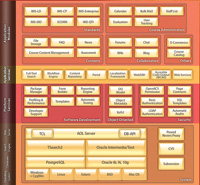 According to Wiley, there are different types of learning objects. Wiley created a taxonomy for use in instructional design, that differentiates these types of LOs. What separates each type is 'the manner in which the object to be classified exhibits certain characteristics'. These characteristics are the same across environments, no matter where the learning objects reside.
According to Wiley, there are different types of learning objects. Wiley created a taxonomy for use in instructional design, that differentiates these types of LOs. What separates each type is 'the manner in which the object to be classified exhibits certain characteristics'. These characteristics are the same across environments, no matter where the learning objects reside.
Proposed model for creating a tool for Learning Objects
 The two main functions of the authoring tool are to enable tutors to: create new objects based on pedagogical patterns, and easily and quickly adapt existing learning objects.
The two main functions of the authoring tool are to enable tutors to: create new objects based on pedagogical patterns, and easily and quickly adapt existing learning objects.
In order to achieve the above objectives, a three tier structure is proposed, comprising Authoring tool

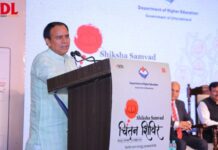




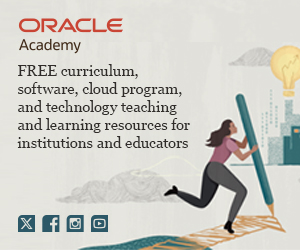

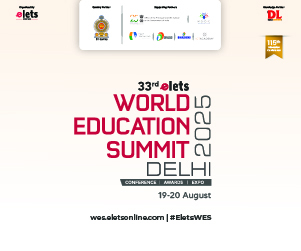


 Following the IT boom, the past few decades has seen a change in the mode of learning. It has now become multi-faceted. With the change in the source of knowledge, the mode of knowledge transfer has also evolved. These days knowledge is not just confined to books or the traditional classroom-based teaching-learning process, it is easily accessible both online and offline through various media. People can easily avail web-based training programmes, learn through computer games and also attend interactive sessions from remote locations. With this shift in trends, the requirements of the teaching-learning process has changed with the courses concentrating more on learners’ requirements.
Following the IT boom, the past few decades has seen a change in the mode of learning. It has now become multi-faceted. With the change in the source of knowledge, the mode of knowledge transfer has also evolved. These days knowledge is not just confined to books or the traditional classroom-based teaching-learning process, it is easily accessible both online and offline through various media. People can easily avail web-based training programmes, learn through computer games and also attend interactive sessions from remote locations. With this shift in trends, the requirements of the teaching-learning process has changed with the courses concentrating more on learners’ requirements. ID is a process that analyses learning needs and promotes a delivery mechanism to meet those needs. A new age Instructional Designer should have some basic qualities like an ideal teacher. She/he also needs to have an open mind on constantly updating oneself to learn what are the latest trends in e-Learning tools and practices. The courses a designer designs, in any organisation, are made for a target audience already set by the organisation or onsite client. Therefore, a designer need to be flexible in terms of visualisation, knowledge update, and also inclination towards the subject assigned. Subjects, contents and mode of approach may vary with the nature of target audience. Sometimes they have to prepare learning instructions based on the contents provided, but at times they may also have to play the role of content developers as well. Therefore, big companies often look out for ‘Content Developers-cum-Instructional Designers’ rather than simply designers.
ID is a process that analyses learning needs and promotes a delivery mechanism to meet those needs. A new age Instructional Designer should have some basic qualities like an ideal teacher. She/he also needs to have an open mind on constantly updating oneself to learn what are the latest trends in e-Learning tools and practices. The courses a designer designs, in any organisation, are made for a target audience already set by the organisation or onsite client. Therefore, a designer need to be flexible in terms of visualisation, knowledge update, and also inclination towards the subject assigned. Subjects, contents and mode of approach may vary with the nature of target audience. Sometimes they have to prepare learning instructions based on the contents provided, but at times they may also have to play the role of content developers as well. Therefore, big companies often look out for ‘Content Developers-cum-Instructional Designers’ rather than simply designers. In today’s fast paced world, a person with disability is confronted with the barriers of mindset, infrastructure, education, and technology. The Techshare conference was conceived by the Royal National Institute for the Blind (RNIB) with the objective of breaking these barriers and including people with disabilities into the mainstream.
In today’s fast paced world, a person with disability is confronted with the barriers of mindset, infrastructure, education, and technology. The Techshare conference was conceived by the Royal National Institute for the Blind (RNIB) with the objective of breaking these barriers and including people with disabilities into the mainstream.










Radicalising Education Through ICTs
Communication technologies popularly known as ICTs are being increasingly linked to education. Integrating technologies with the educational system is a major challenge of pedagogy today.